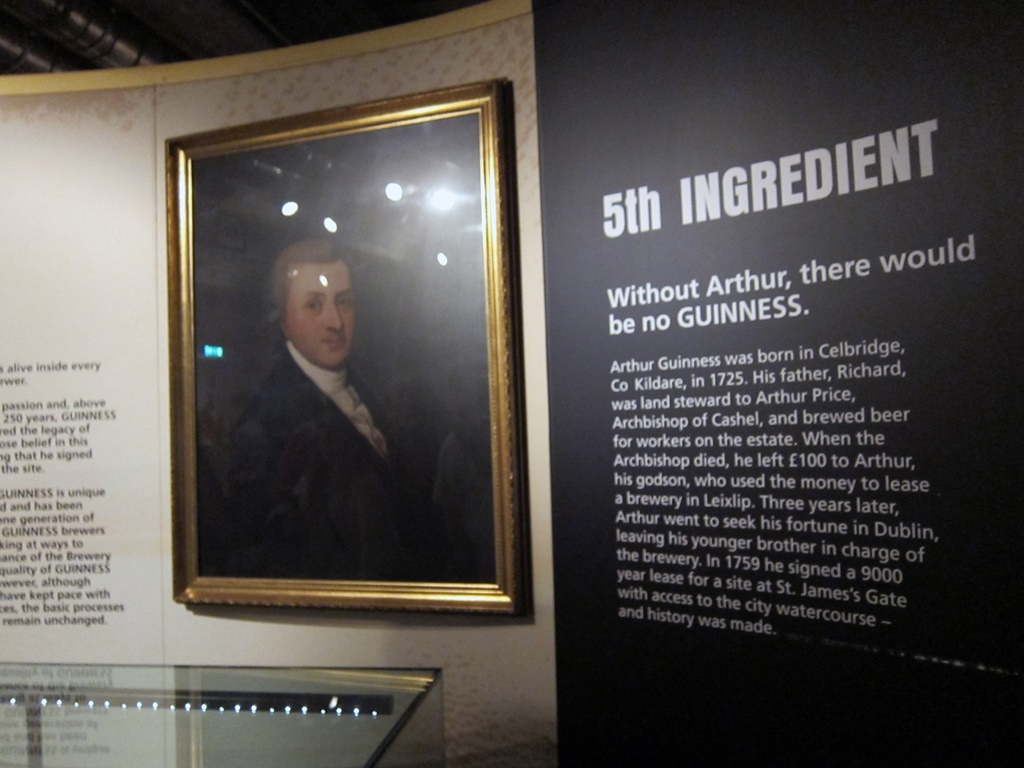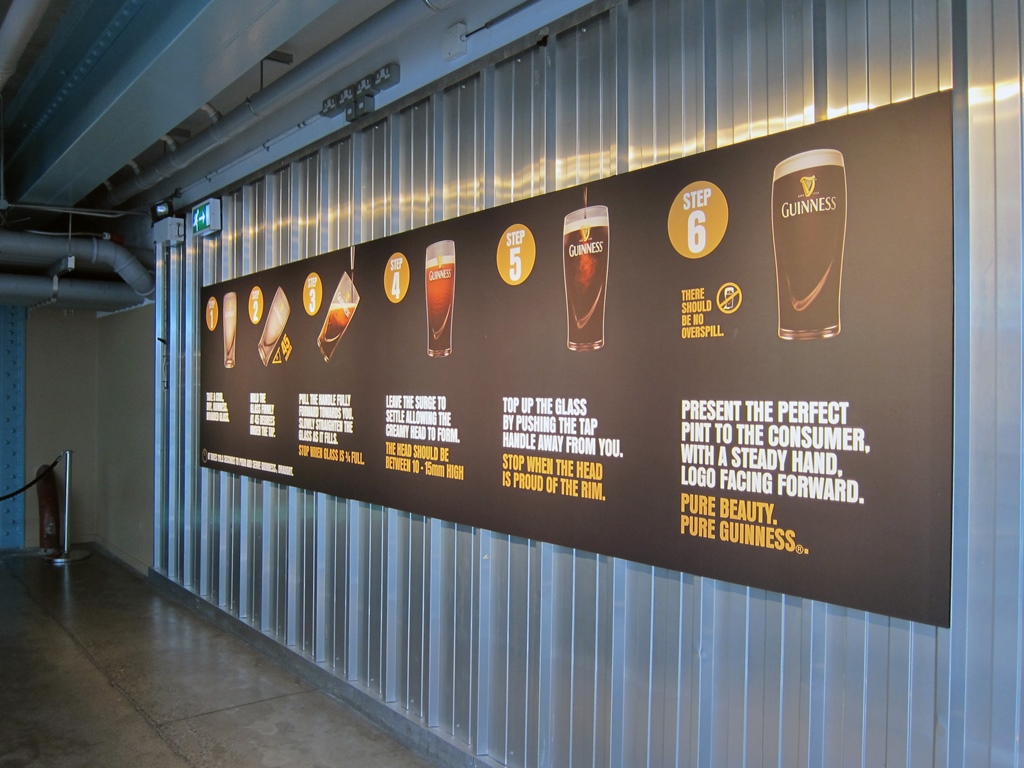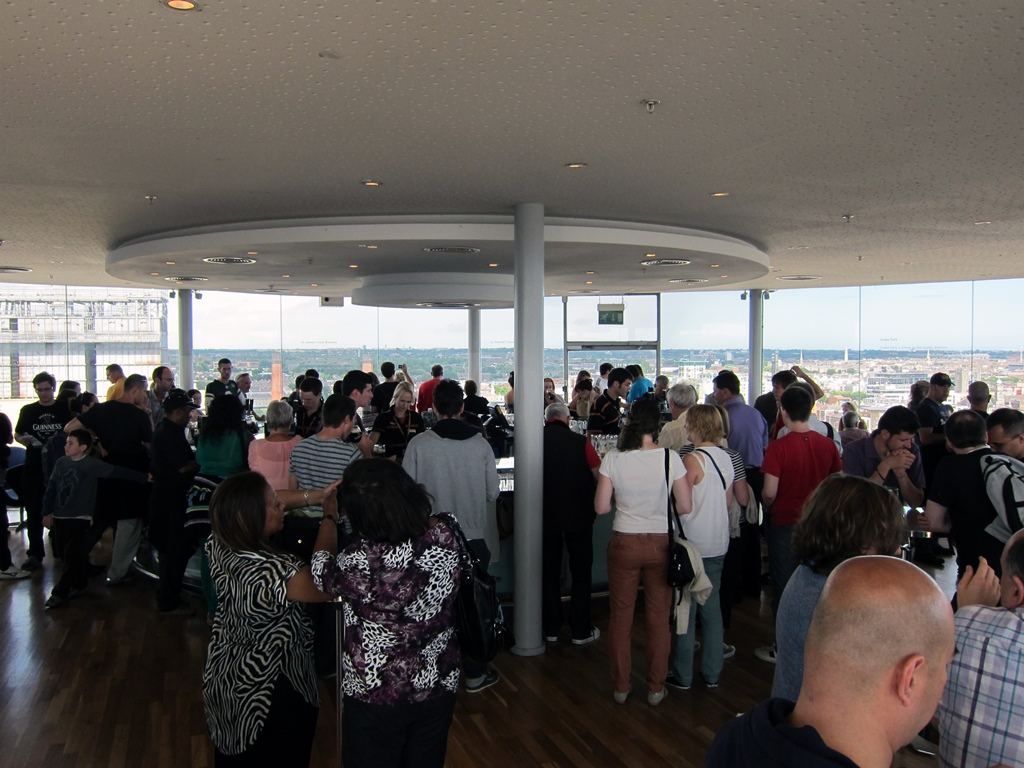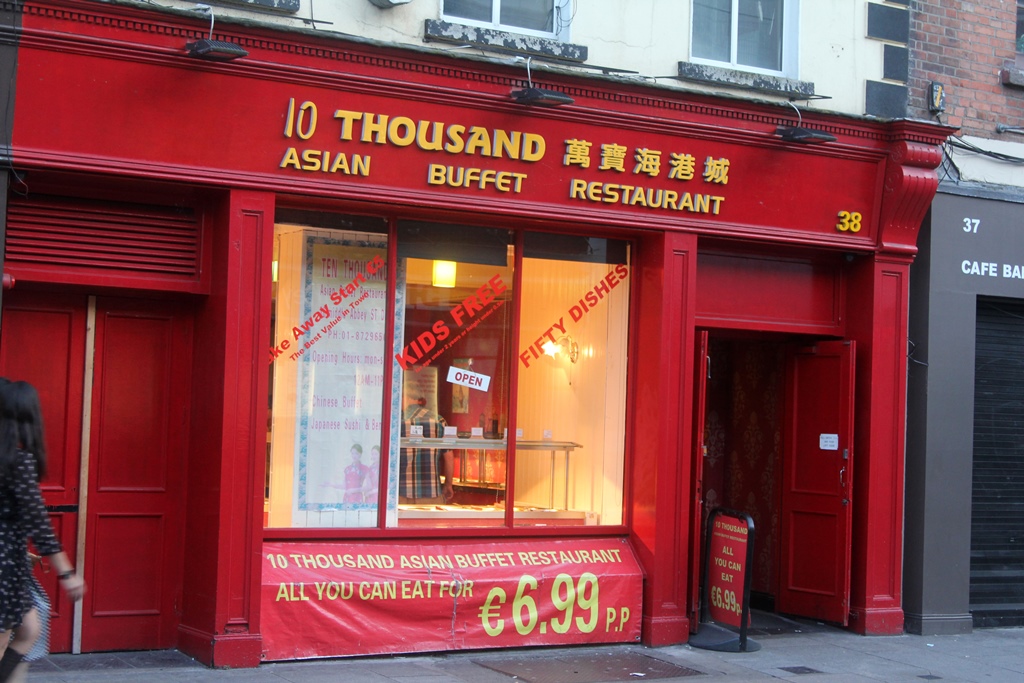Readers of other pages on this site may have noted that Nella and I are non-drinkers,
and there may be a certain amount of idle curiosity about this peculiarity. It does
leave something of a gap in our travel coverage – we may go to an area famous for its
wines or beers, for example, and we won't really have much to say about it. You may
find yourself horrified and thinking, "They didn’t try any of the wine? Or any of
the beer? Nothing?" If you're not asking yourself these questions,
feel free to skip to the next paragraph. For those of you still here, a simple answer
in my case would be that I've never liked the flavor, and I've never been interested
in the effect. I've tasted a number of such beverages over the years, and have
managed to struggle through a complete drink only once. More commonly, my experiences
have been like one I had in college, when someone thoughtfully made me something
called a Tequila Sunrise. The first sip wasn't too bad, tasting pretty much like
orange juice. The second sip tasted like orange juice with a problem. The third sip
tasted like something you would put out to kill cockroaches. The fourth sip, and the
rest of the cup (it was served in lovely styrofoam), went down a drain in an act of
mercy toward the houseplants. As for the effect, I already do plenty of stupid
things on my own and don't really need any additional help with this. I'm not sure
exactly why Nella doesn't drink. She's actually better at tasting things than I am,
and can finish the occasional drink. But generally speaking, she doesn't drink
either. I don't know if she follows the same thought process as me, or if she's just
being polite, so I won't feel like I'm the only social misfit. Or maybe she has a
secret thermos of Margaritas stashed somewhere...
Our children, on the other hand, do not share any of the misgivings Nella and I have
about alcohol, and maintain a more affectionate acquaintance with it. Philip, for
example, was very interested in visiting the Guinness Brewery in Dublin, and maybe
accidentally ducking his head in a vat for a few minutes during the tour. But sadly
this was not to be, as they don't conduct brewery tours, at least not for the general
public. But the Guinness Brewery, located at St. James's Gate a little west of the
town center, did have something called the
Guinness Storehouse
adjacent to it, which
is sort of a beer museum with an entry fee that includes a pint of the wondrous
elixir that's produced next door. Philip heard this and was sold, and resolved to
wander Dublin independently for the day, following a route that would take him to the
vicinity of St. James's Gate.
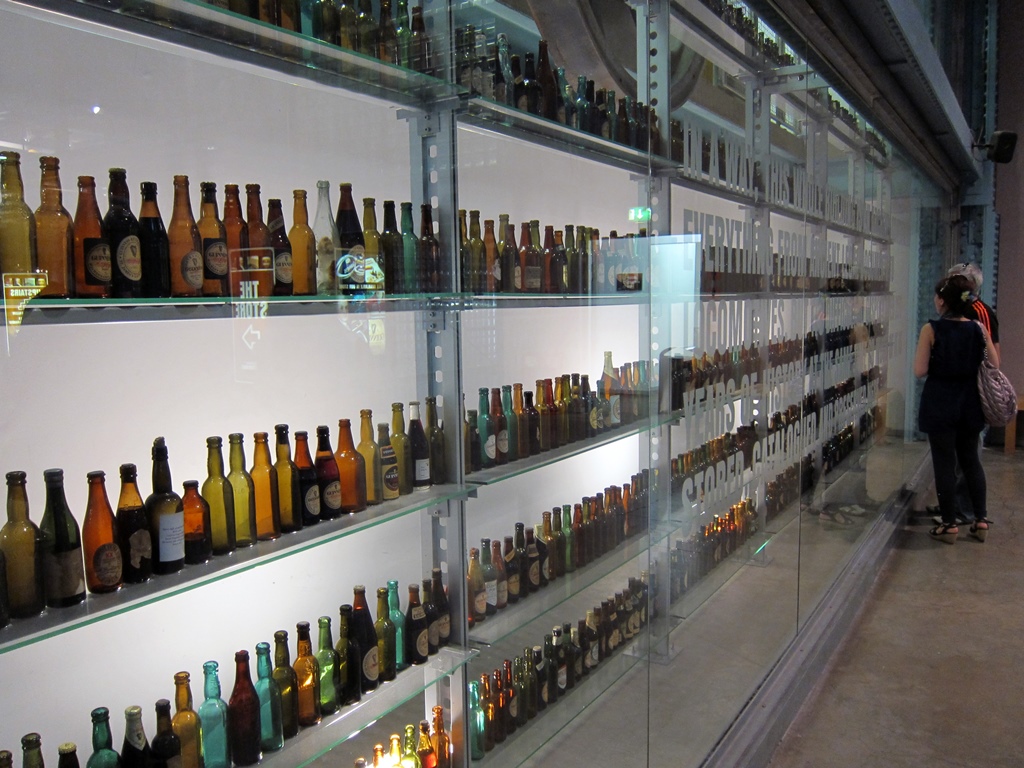
Many Bottles, Guinness Storehouse
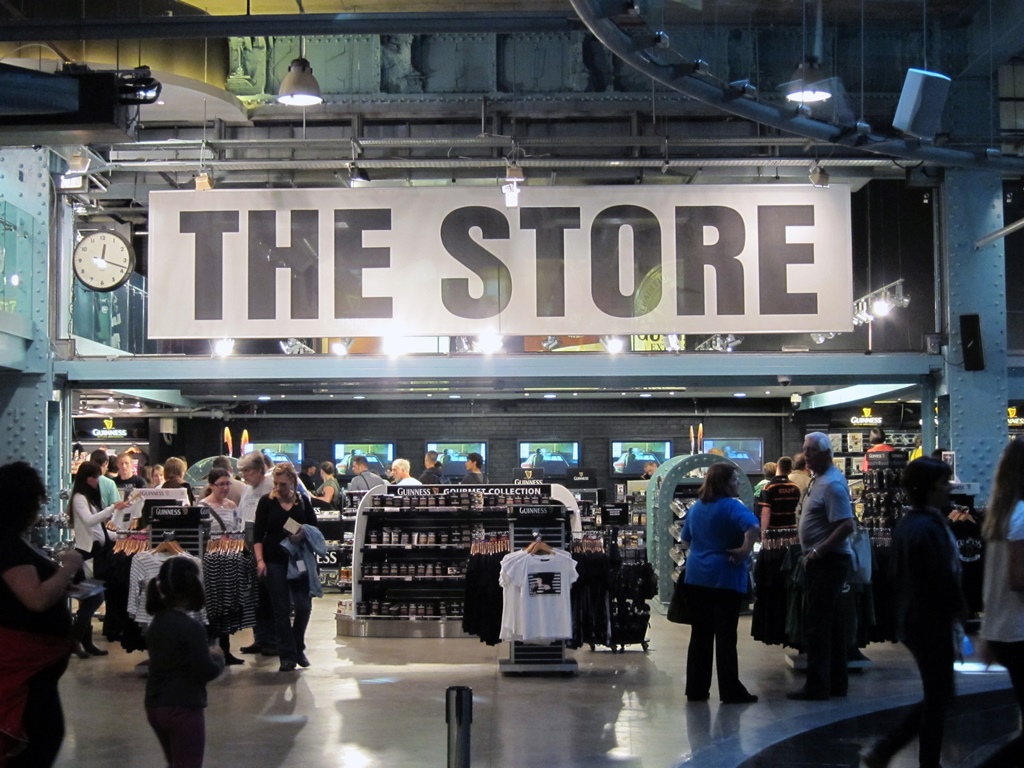
Guinness Gift Shop
The Guinness Storehouse has seven floors of attractions related to the Guinness brand.
There are places to eat and drink and places to buy merchandise, all things commonly
found in conventional museums. But all of the exhibits here are devoted to beer,
starting with displays of the primary ingredients that go into it: water, barley,
hops and yeast. Naturally, Guinness only uses the finest of each. The yeast in
particular is proprietary, and comes from a strain that goes back centuries.
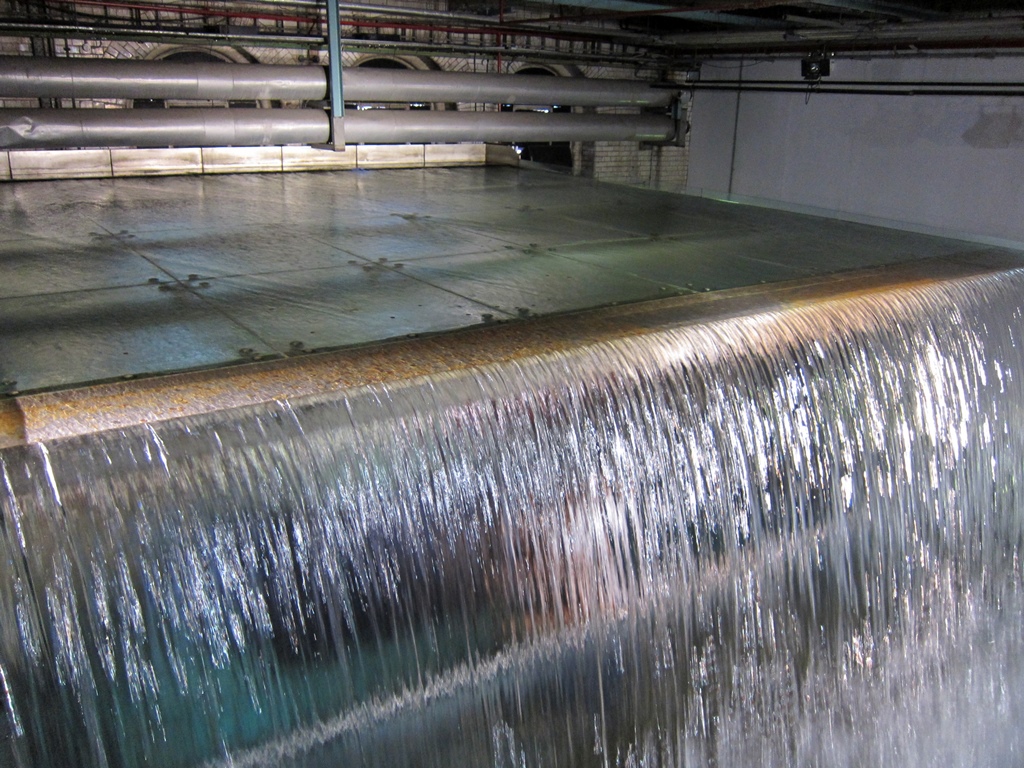
Water Display
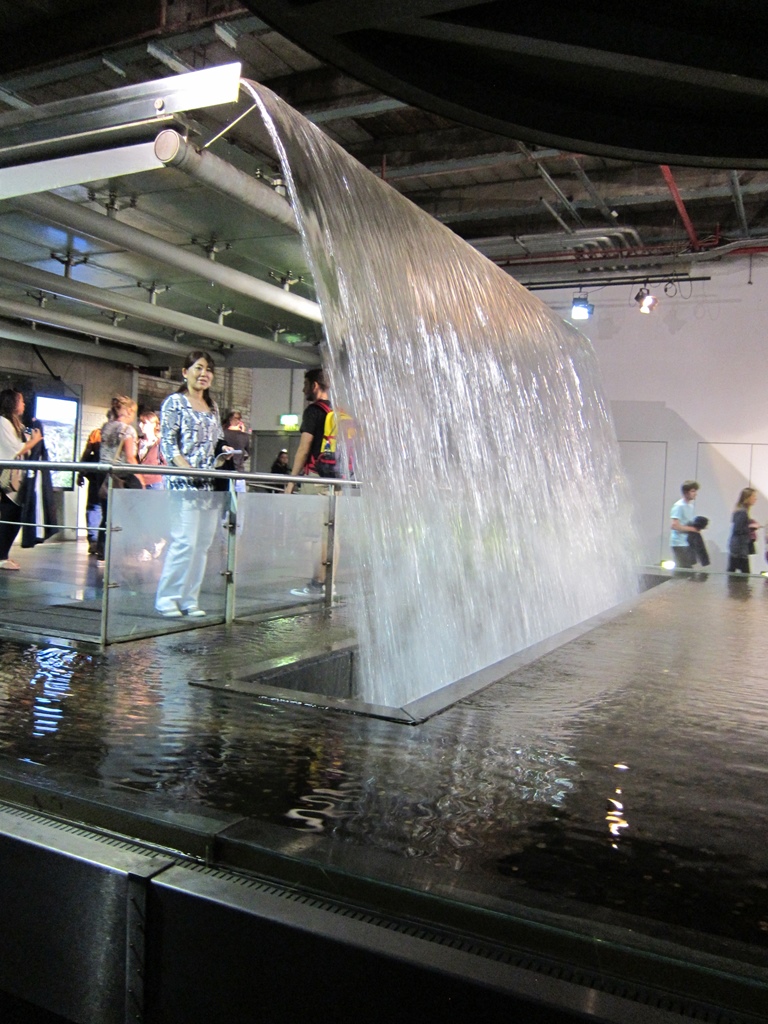
Water Display
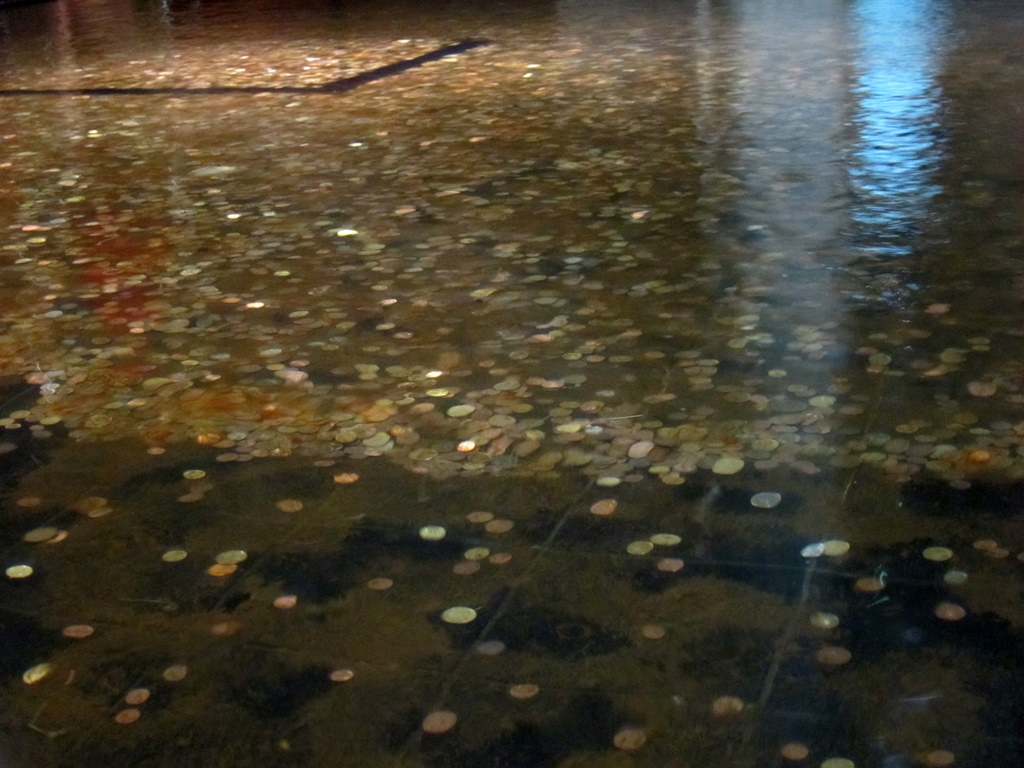
Coins in Water Display
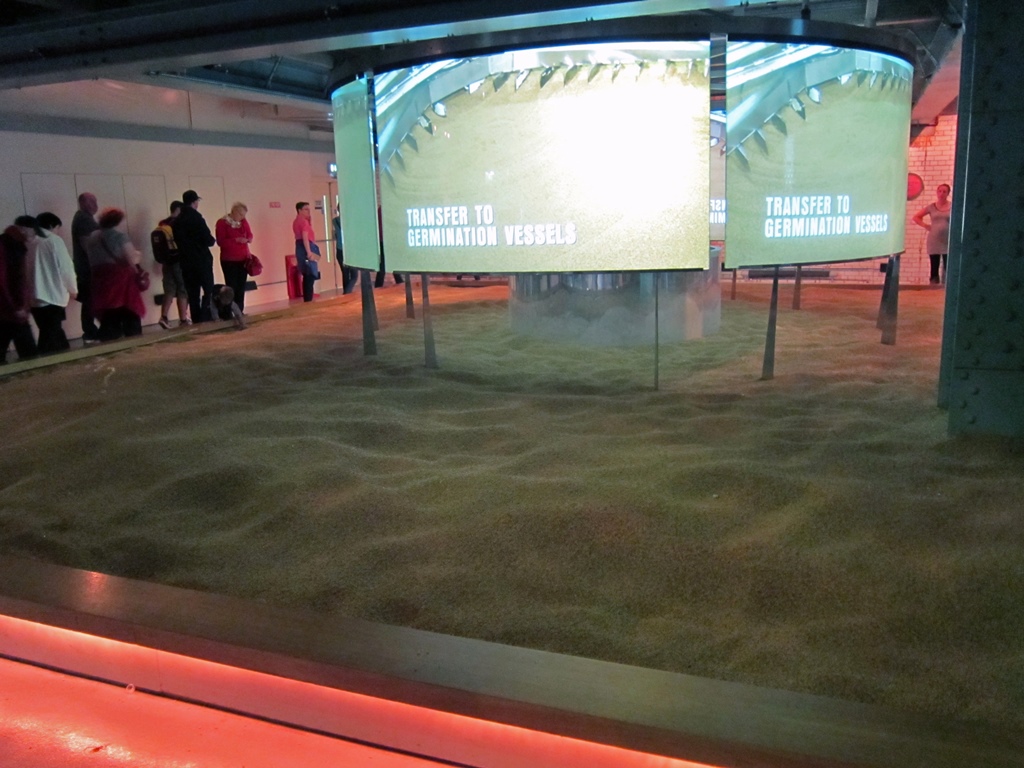
Barley?
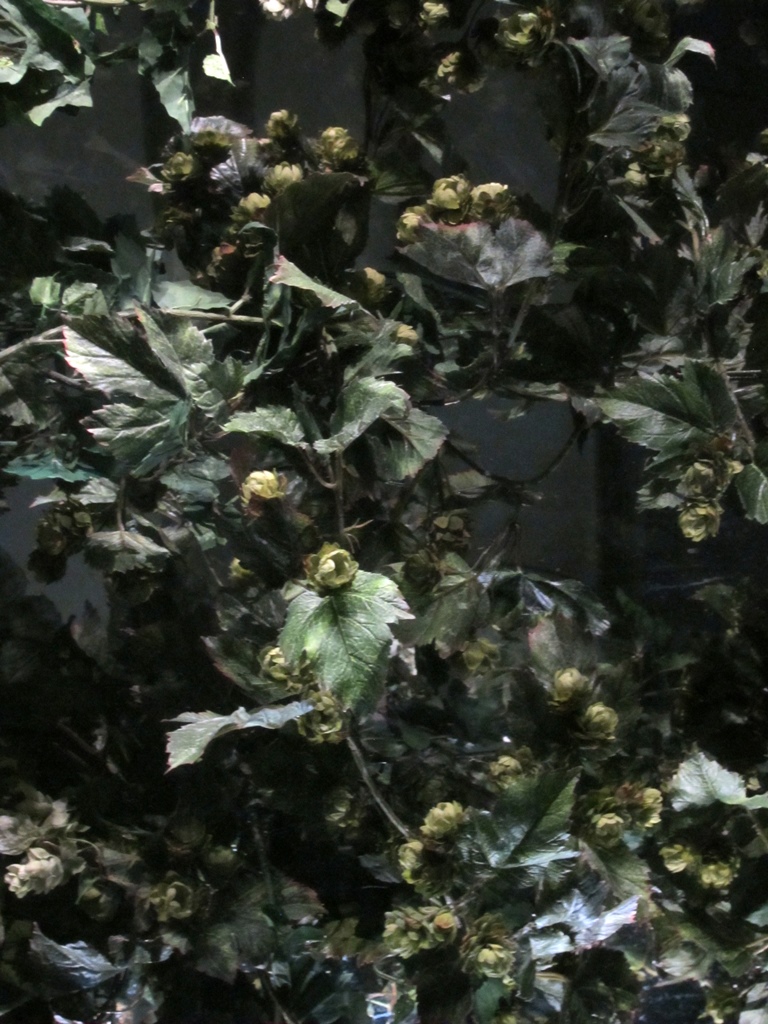
Hops
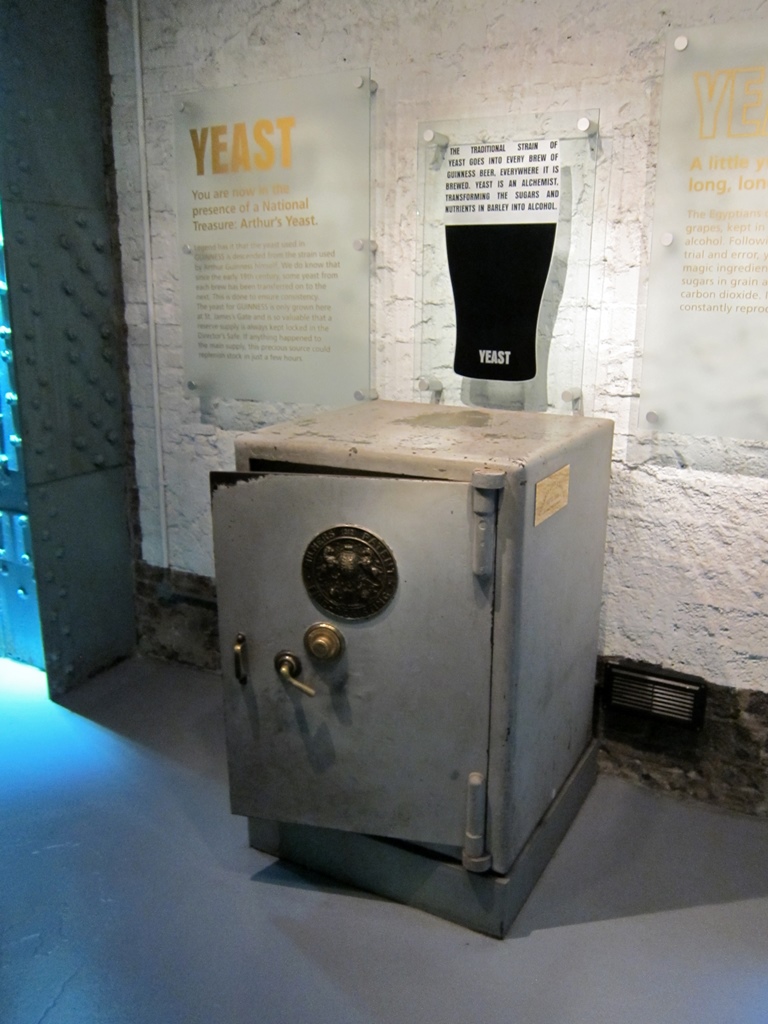
Safe for Storing Proprietary Yeast
Some discussion is also devoted to the history of the company, with its founder,
Arthur Guinness, described as "the fifth ingredient". Arthur started the company in
1759, when he signed a 9000-year lease for the St. James's Gate site at £45 per annum
(they saw him coming!). While the facilities have changed considerably since
then, the general idea behind the beer production has not. There have been a few
changes – many different varieties of Guinness have been produced over the years,
most of them seasonal or otherwise limited-time-only. Apparently the bubbles now
come from both nitrogen and carbon dioxide (the sixth and seventh ingredients?),
which have somewhat different but desirable properties. In 1997, Guinness merged
with a conglomerate called Grand Metropolitan (owners at the time of hotel interests,
Pillsbury and Burger King, and beverage brands J&B, Bailey's, Gilbey's and Heublein)
to form a company called Diageo PLC, which remains the parent company.
All About Arthur Guinness
The Storehouse also has displays of some of the hardware that's been used in the
process of beer production, from old-school tools and wooden vats and barrels, to more
modern storage and processing containers.
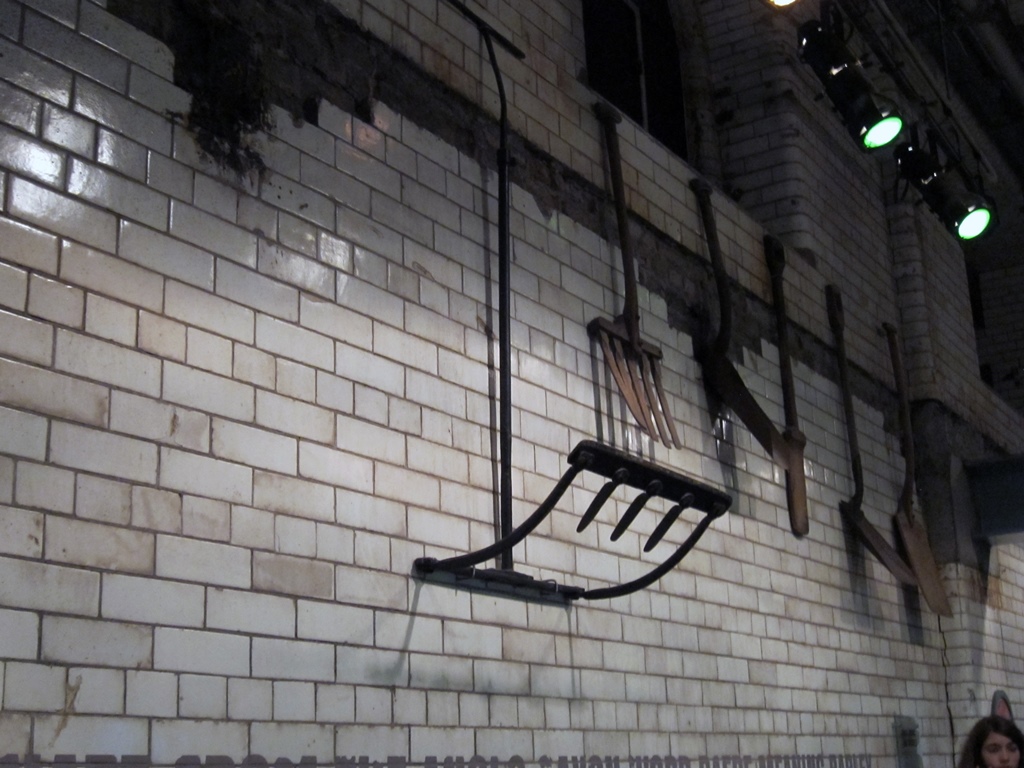
Old-School Tools
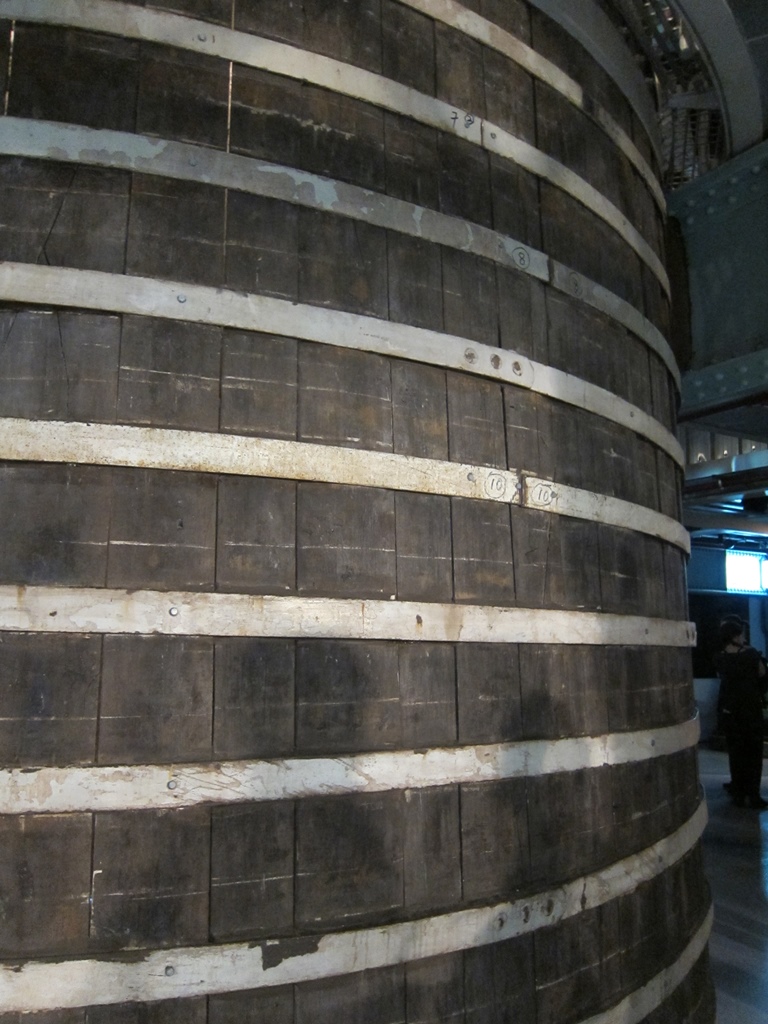
Old-Style Vat
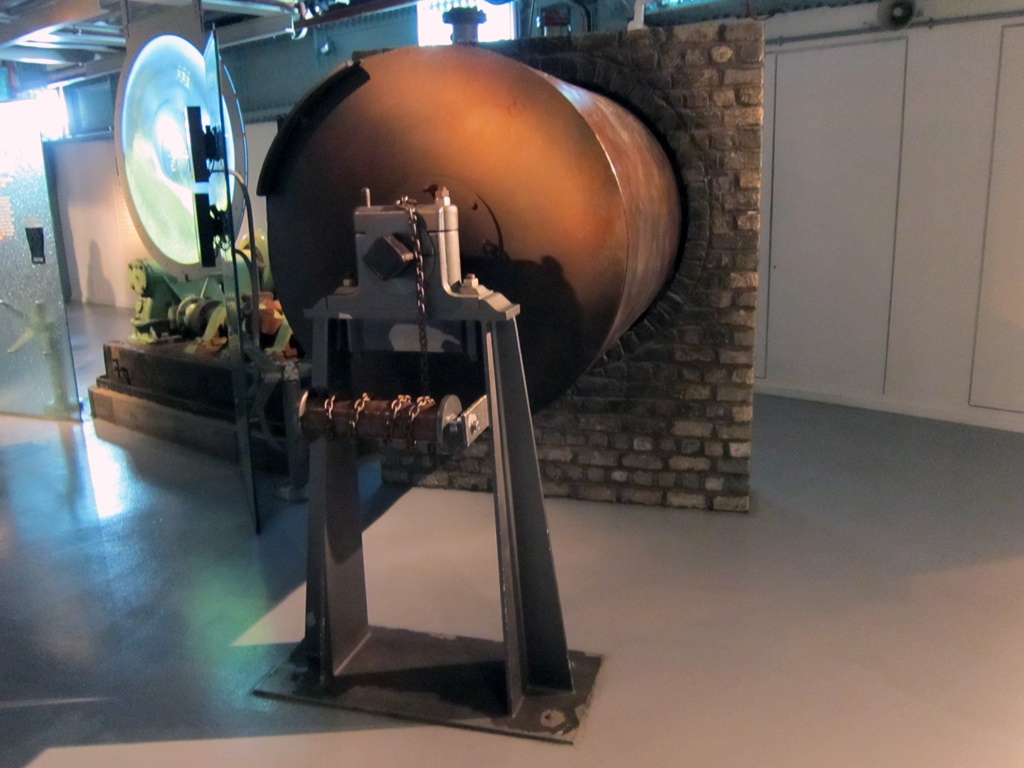
Big Metal Cylinder
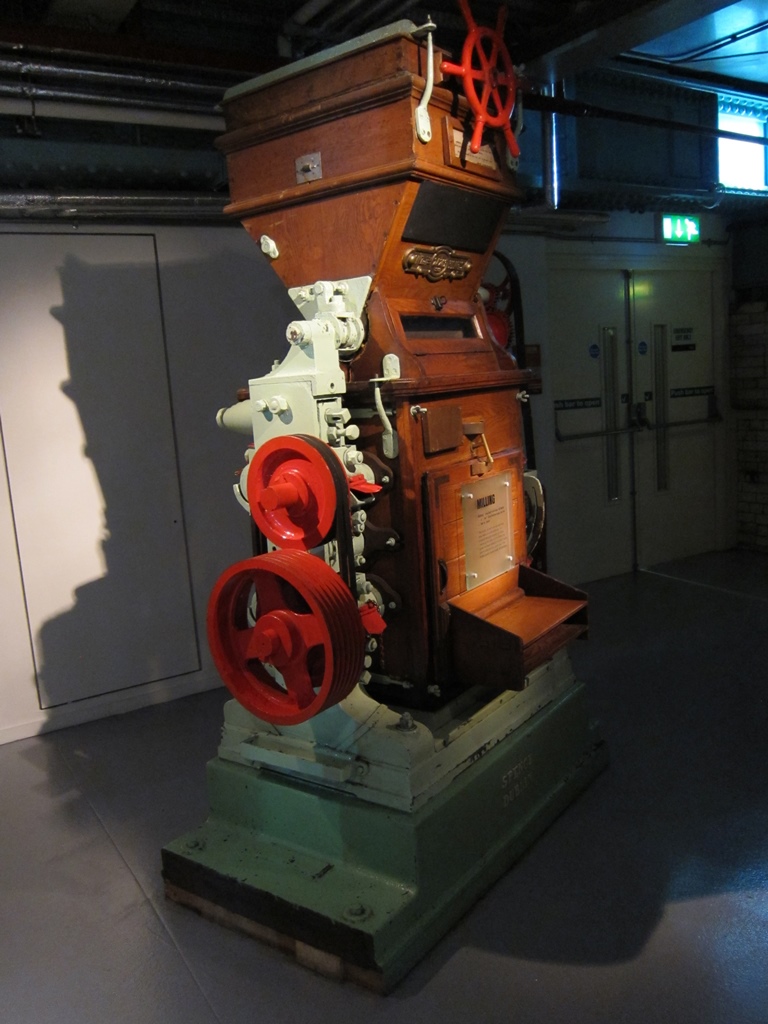
Milling Machine
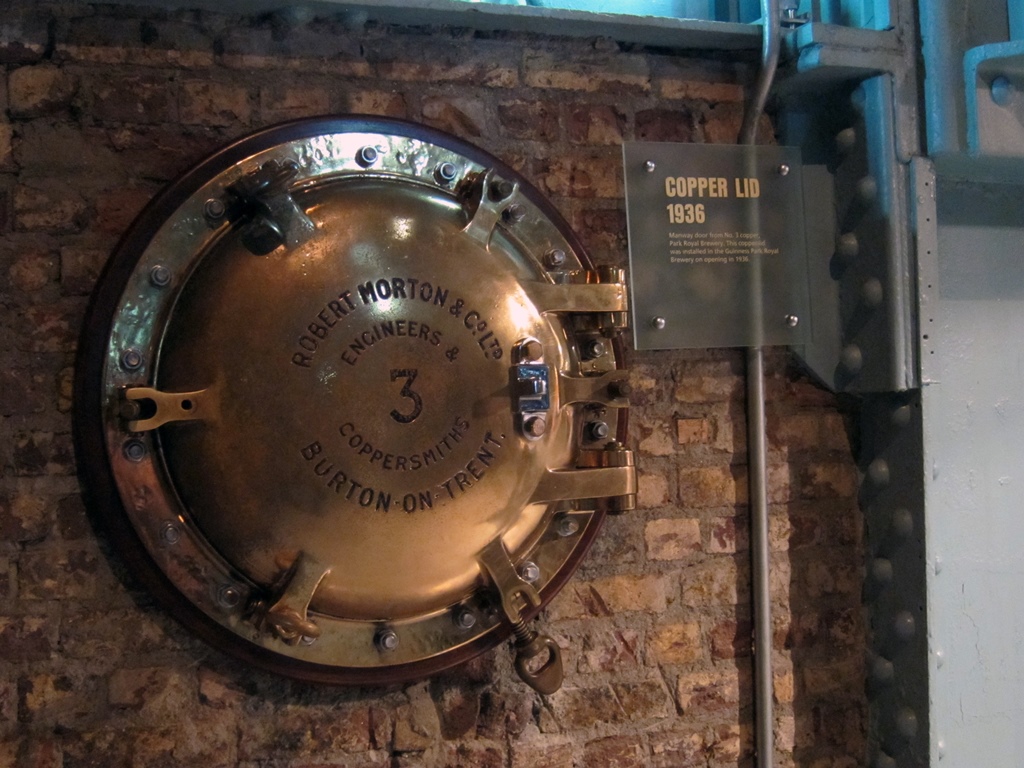
Manway Door (1936)
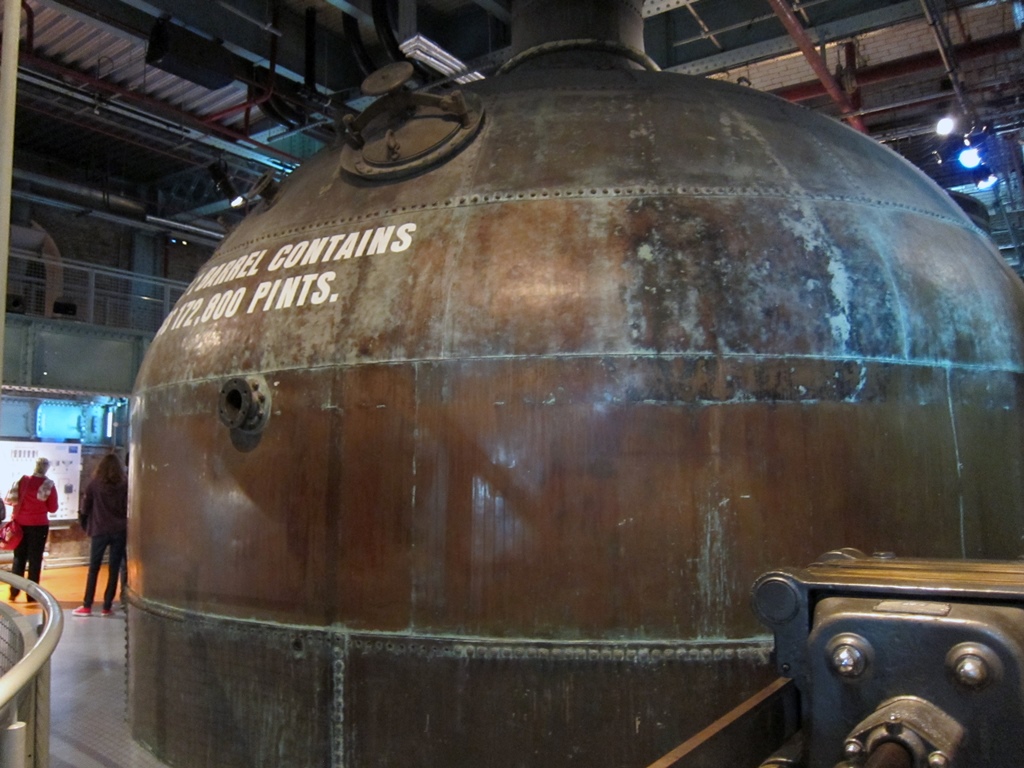
Vat with Capacity of 172,800 Pints
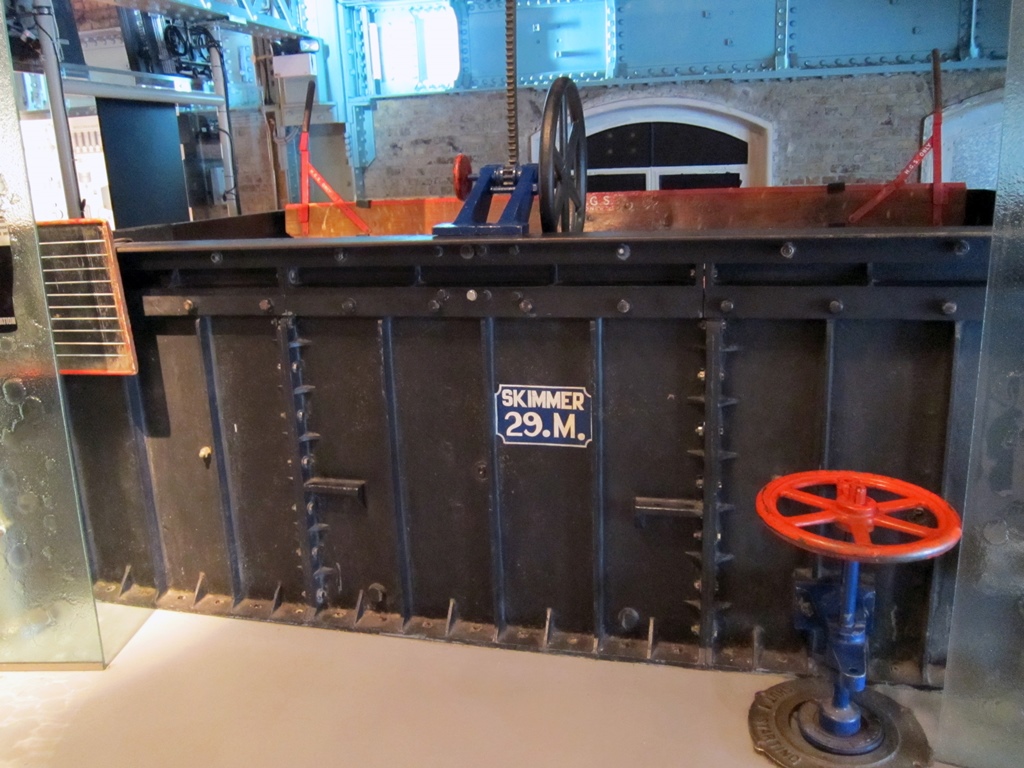
Skimmer
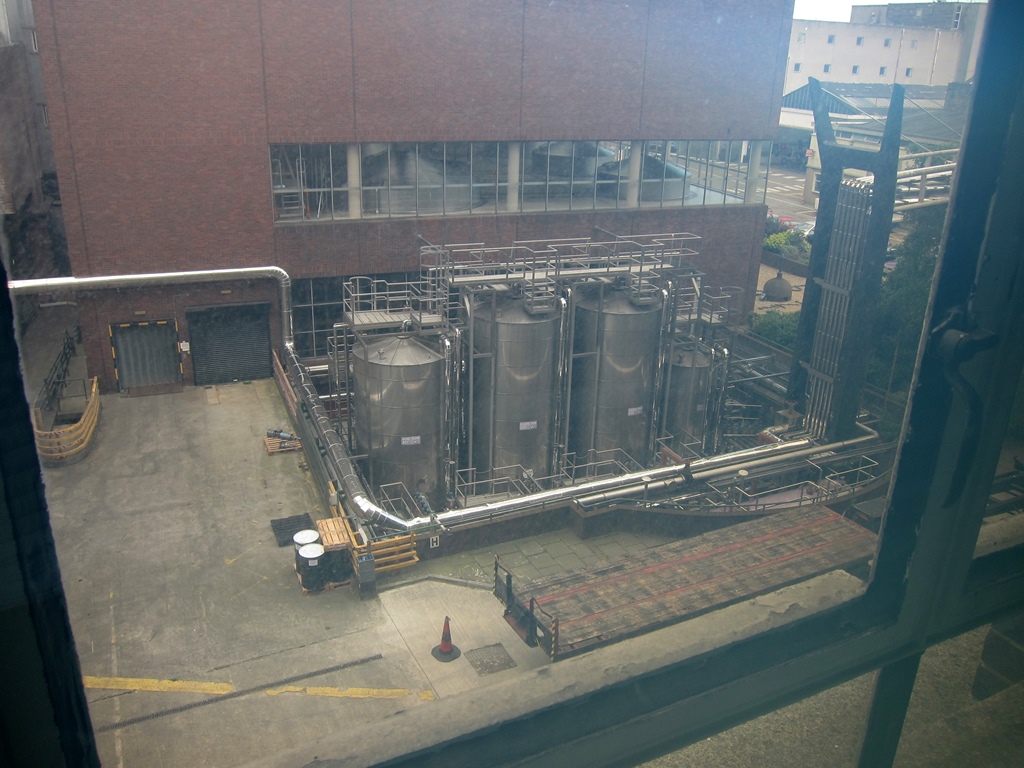
Storage Tanks
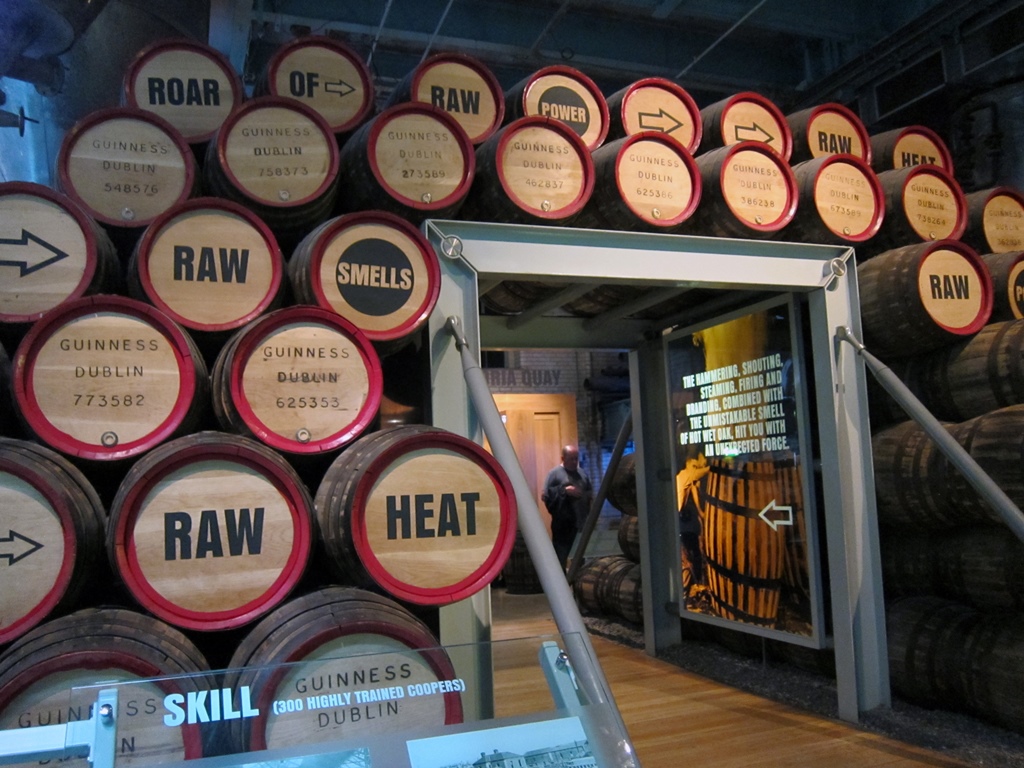
Barrels
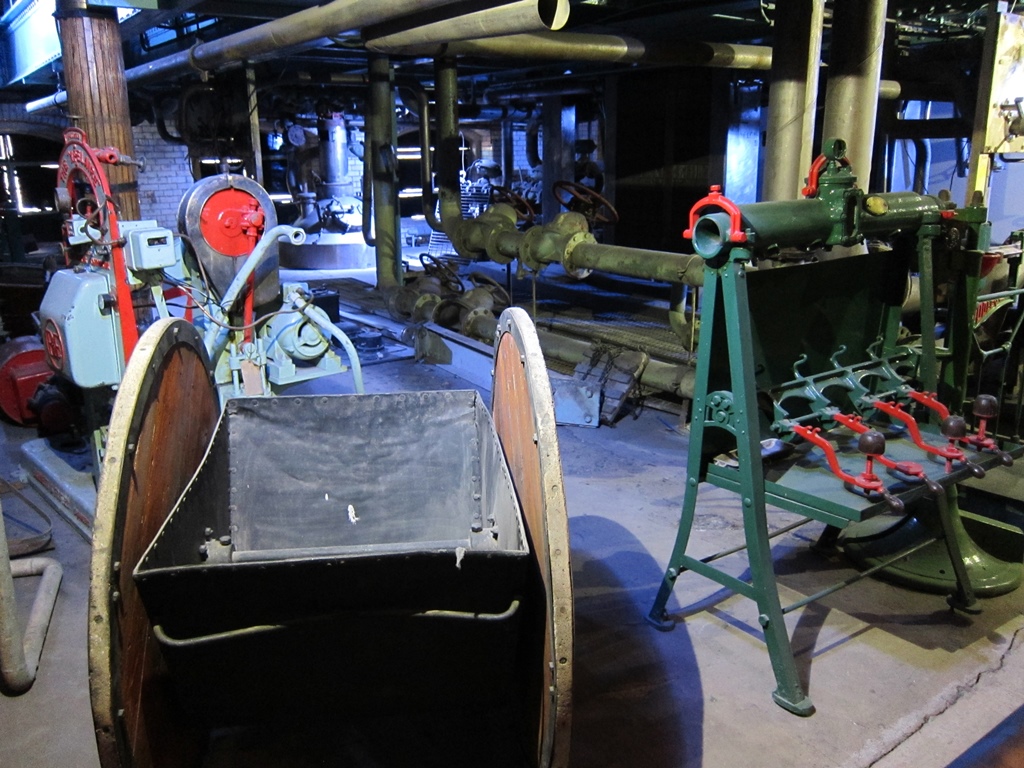
Plumbing and Machinery
Another exhibit is devoted to the advertising of the Guinness brand. For many years,
Guinness did not advertise at all, content with awareness of the brand spreading through
word of mouth. They did adopt a harp as their symbol in 1862 (there was a similar harp
on the Irish coat of arms, and Guinness avoided trademark difficulties by having their
harp face right instead of left), but didn't succumb to full-scale advertising until the
1930s, when they needed to turn around some falling sales numbers. Guinness advertising
quickly became ubiquitous, in many instances featuring exotic animals (most notably a
toucan).
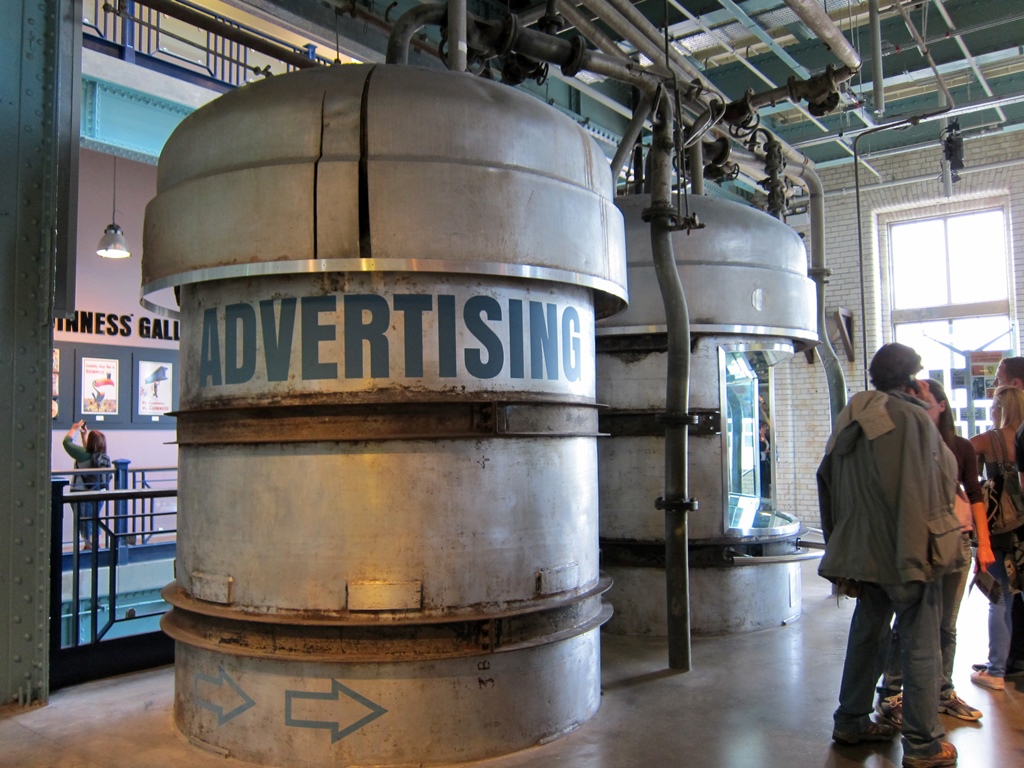
Entrance to Advertising Display
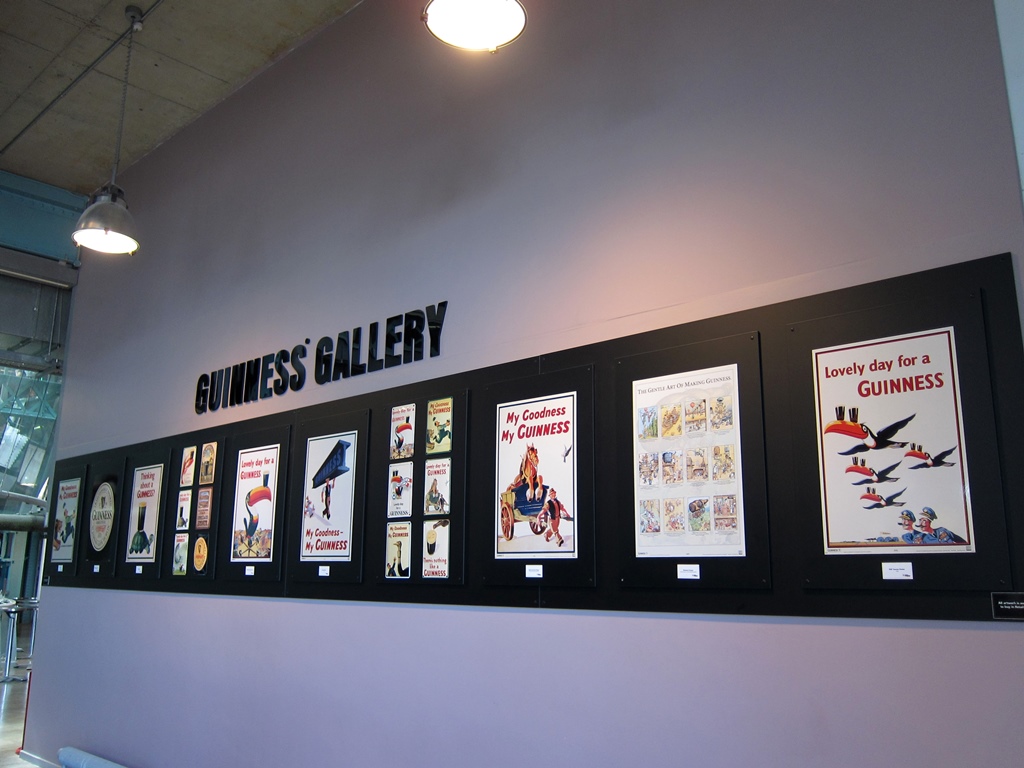
Print Advertising
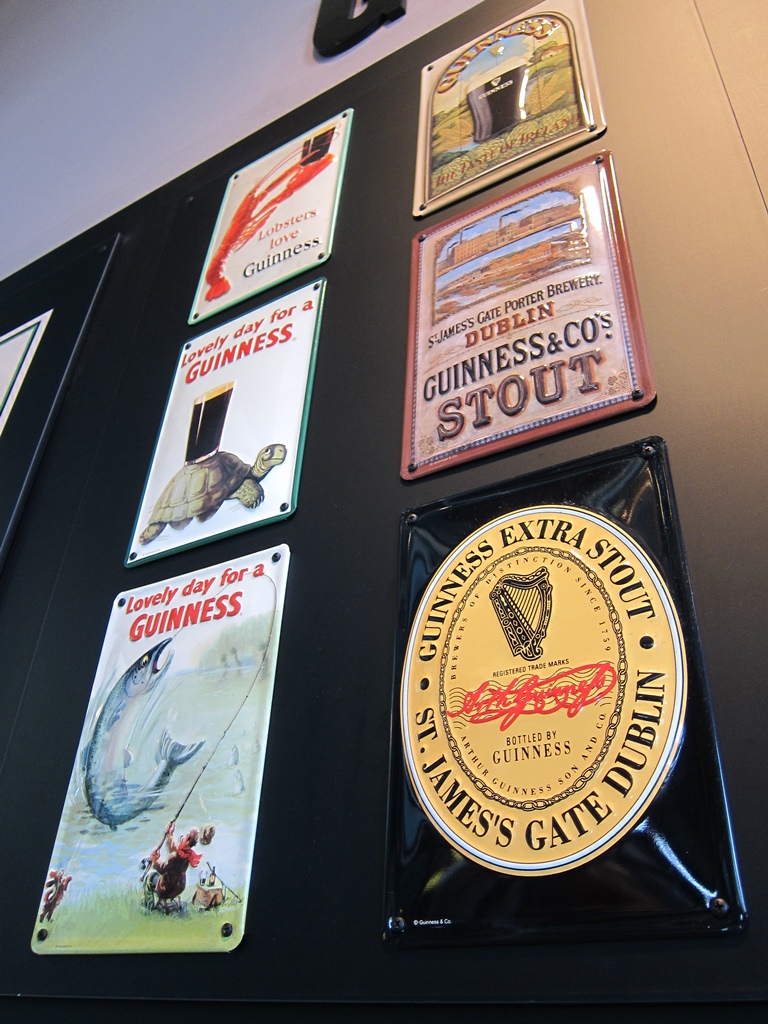
Metal Signs
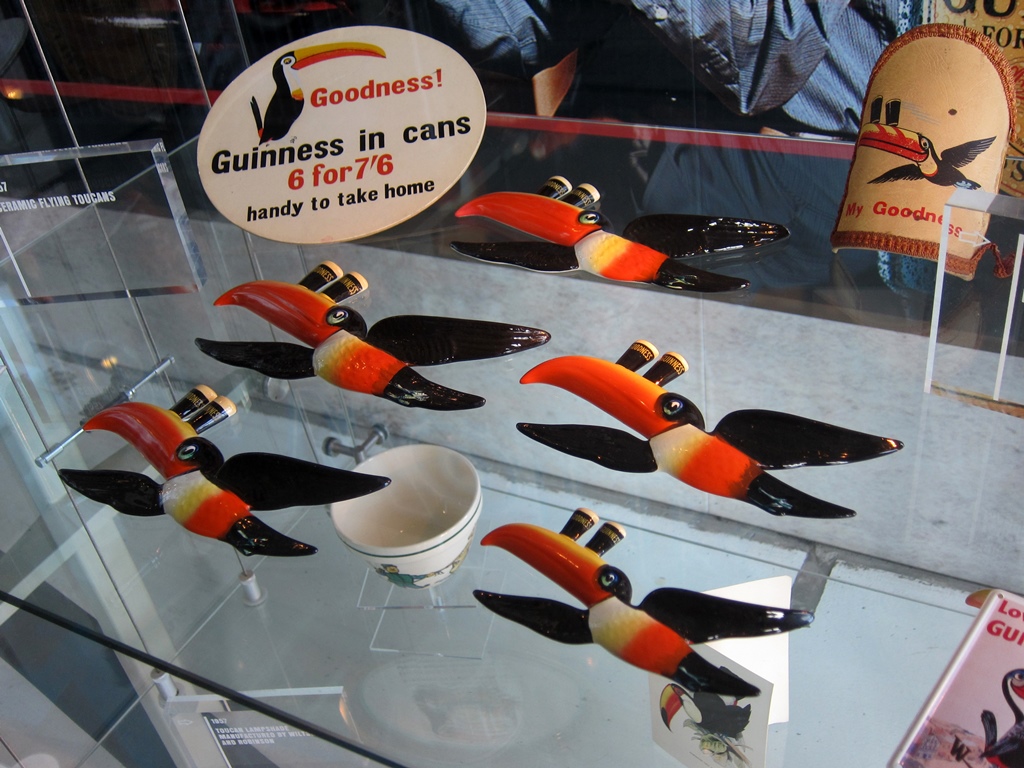
Toucan Merchandise
After looking at the exhibits, visitors have the opportunity to practice pouring "the
perfect pint" of Guinness, with detailed instructions, and to drink the outcome,
whether perfect or not. Evidently Philip handled the task admirably.
Instructions for Pouring "The Perfect Pint"
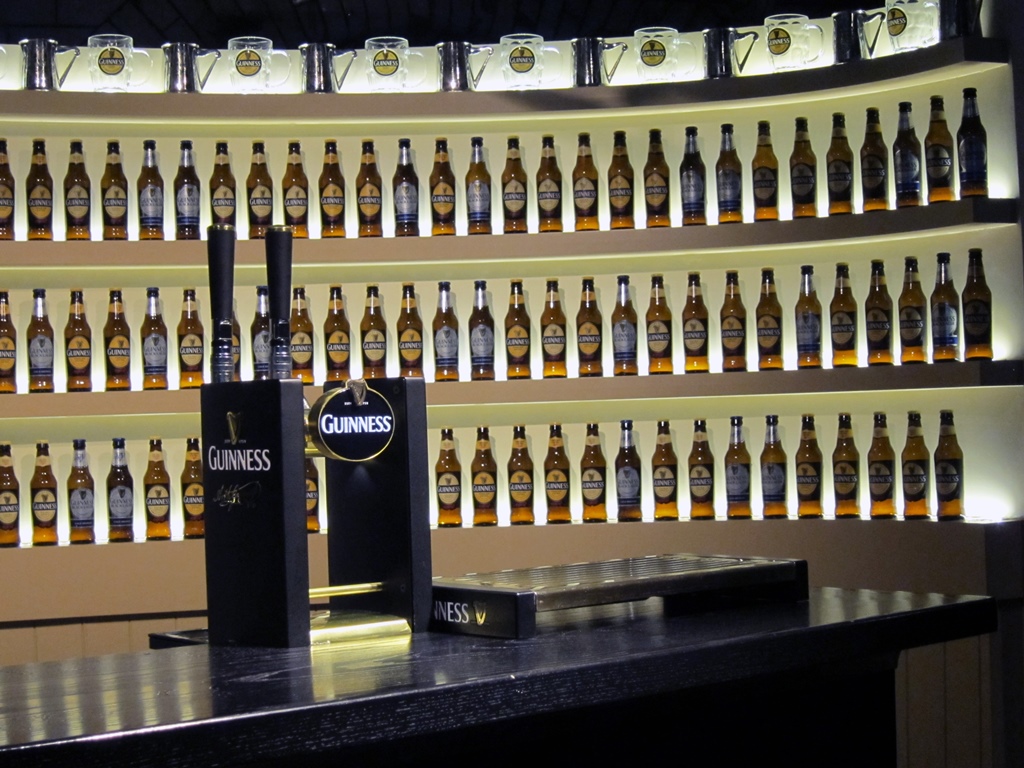
Pint Pouring Station
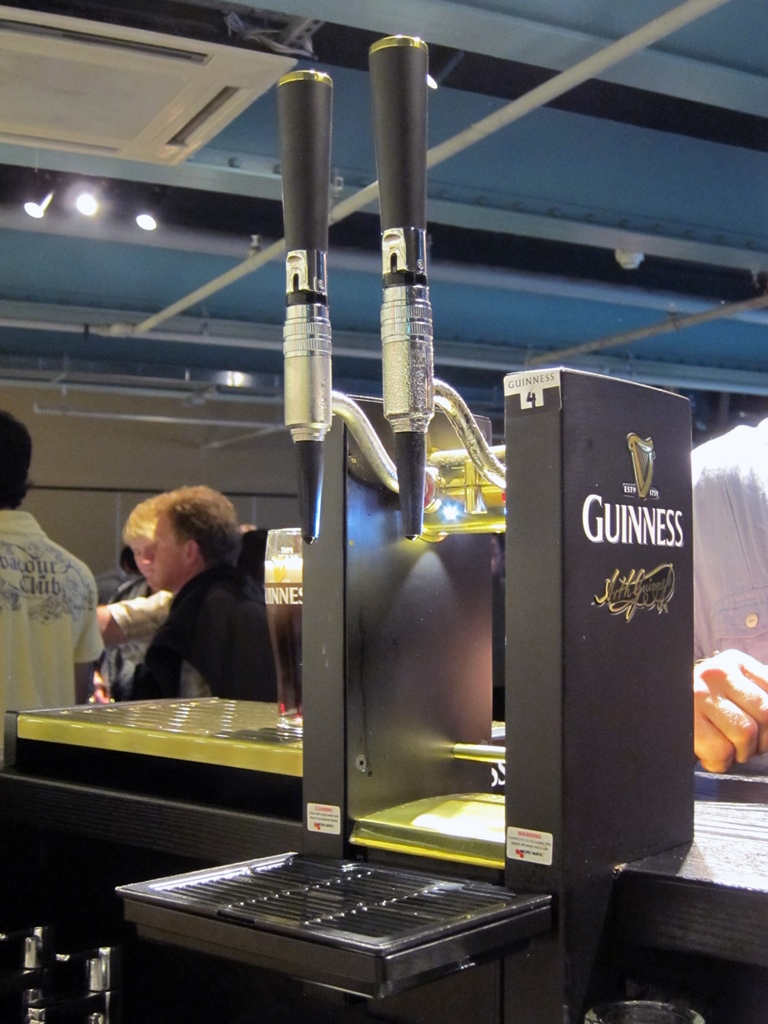
Pouring Apparatus
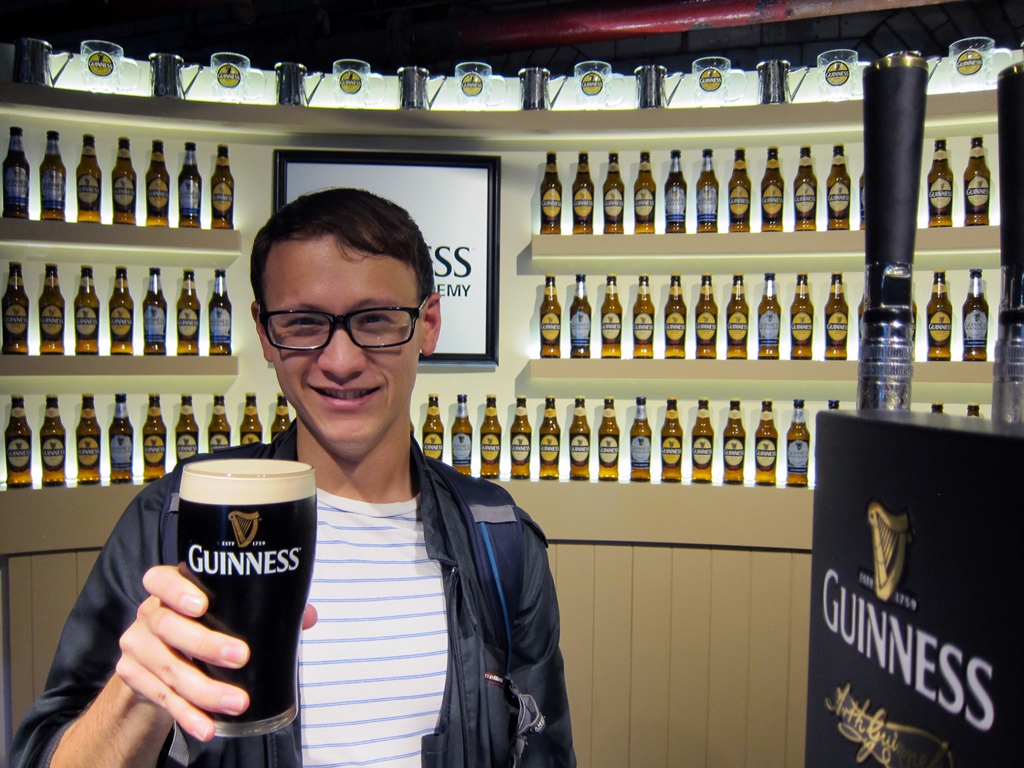
Mission Accomplished!
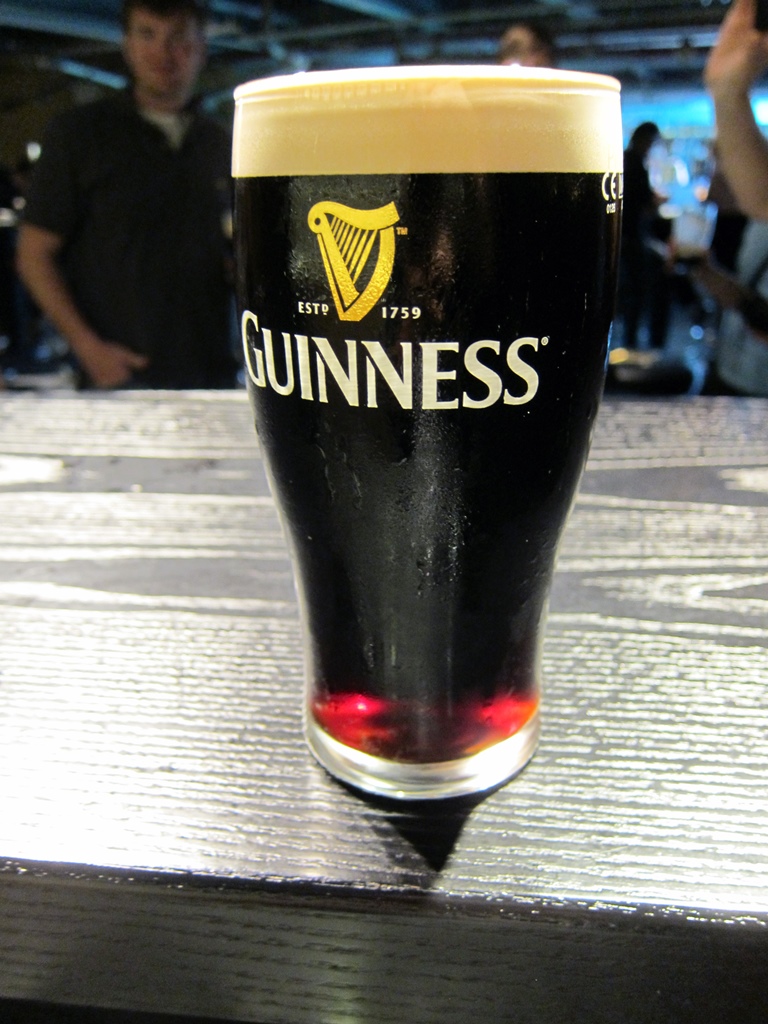
A Perfect Pint
On top of the Guinness Storehouse there is a place called The Gravity Bar,
which features a spectacular 360-degree view of the brewery and slightly-western
Dublin, as well as an opportunity to purchase additional perfect pints, poured
by professionals.
The Gravity Bar
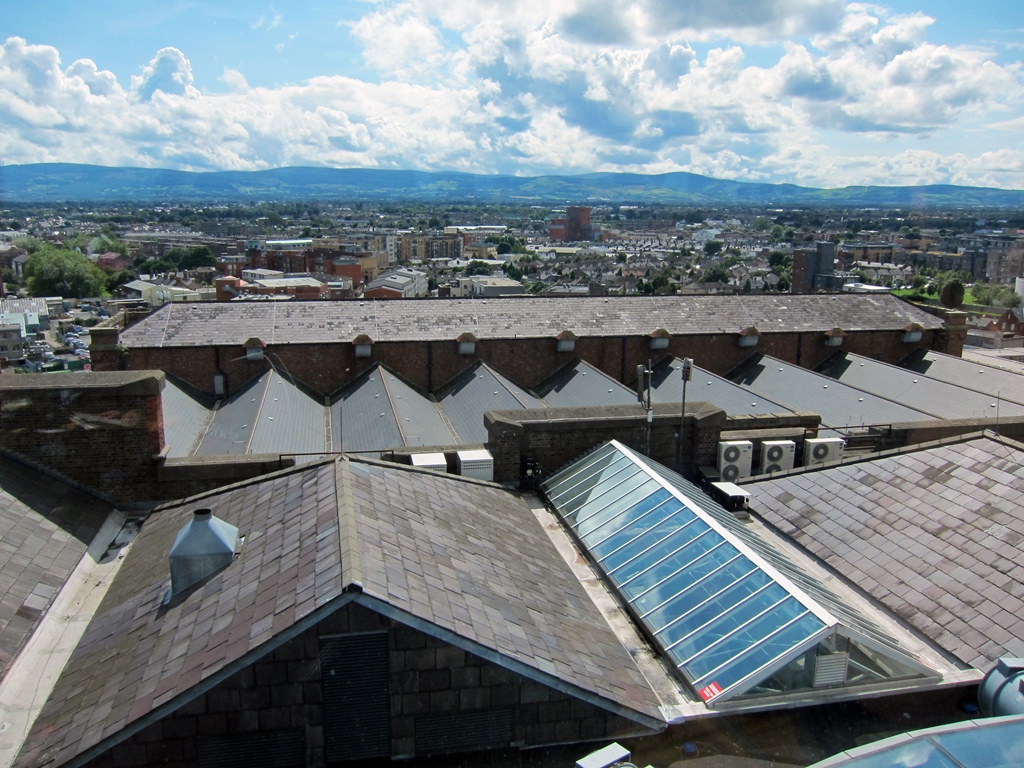
View from the Gravity Bar
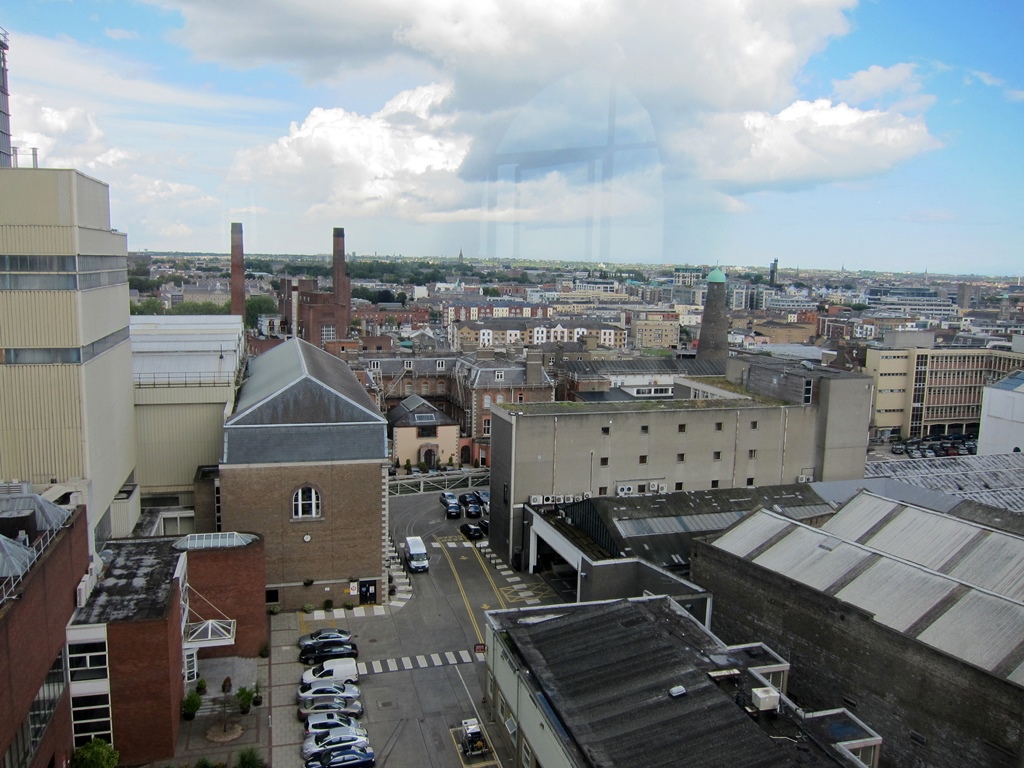
St. James's Gate Brewery
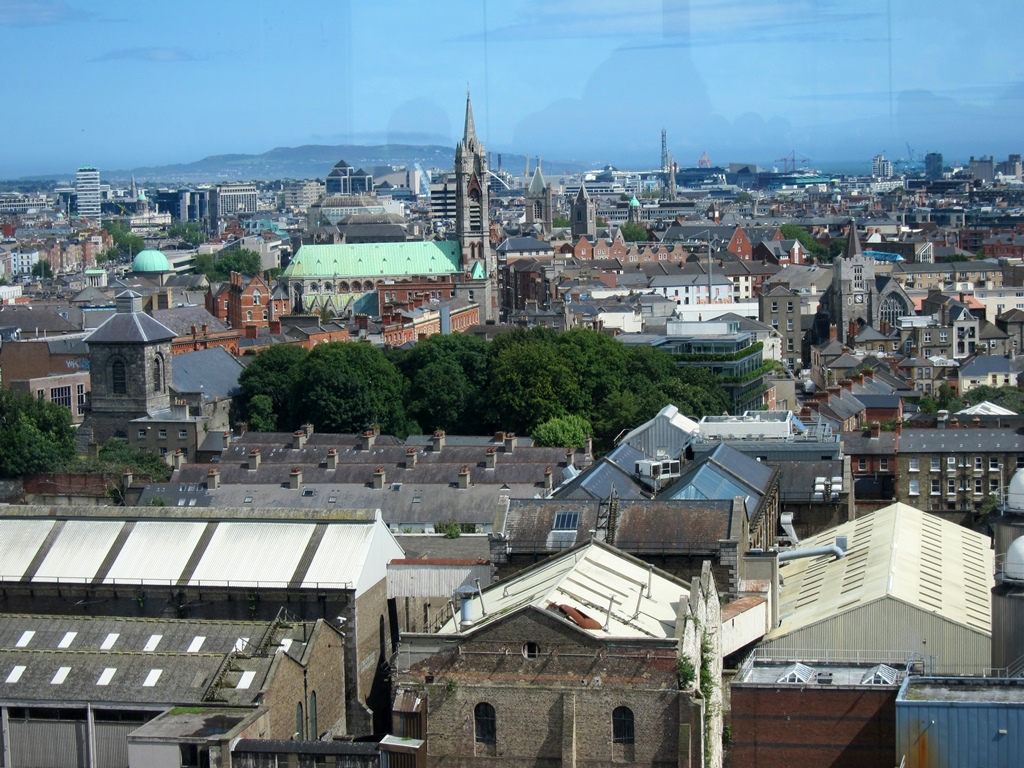
View from the Gravity Bar
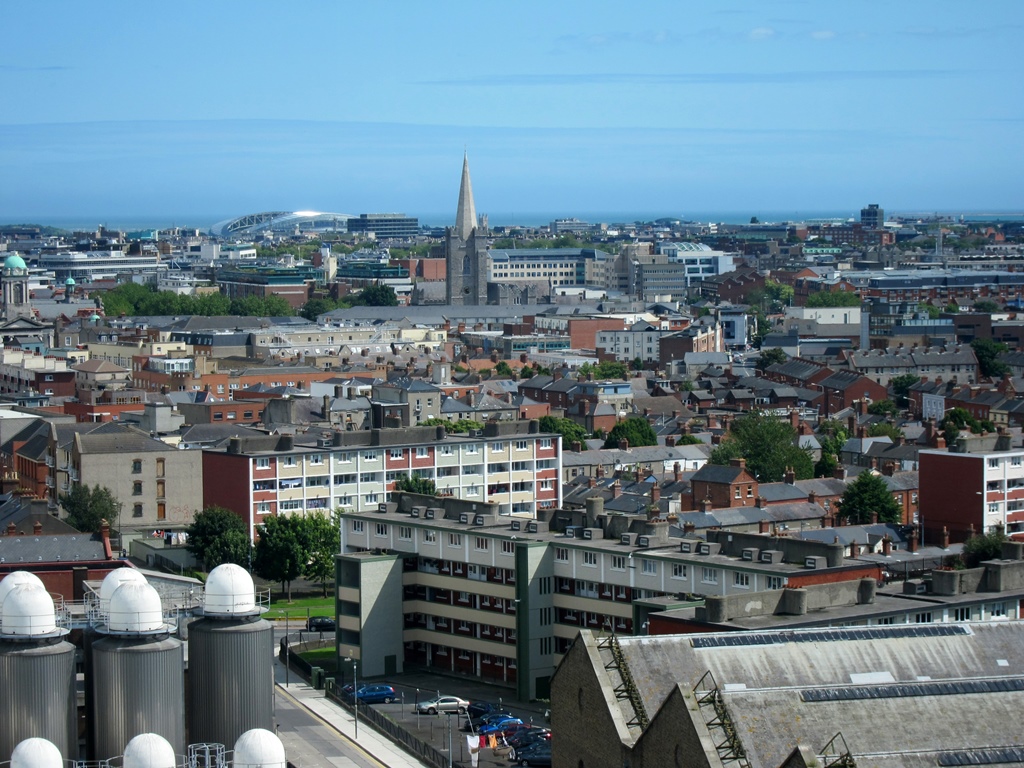
View from the Gravity Bar
After having his fill of both Guinness and the Storehouse, Philip left and wandered
around the south bank of the Liffey, passing by some of the landmarks visited by Nella
and me (I used one of his Christ Church photos on the
Christ Church Cathedral page),
and eventually returning to the hotel. Nella and I eventually returned as well, and
after some rest we went out in search of food, settling on an Asian buffet on the
north bank.
10 Thousand Asian Buffet
After dinner we walked back along the river, passing by the famous Ha'penny Bridge. The
Ha'penny Bridge is a picturesque footbridge across the Liffey that was built in 1816 to
replace a group of ferries that had gone into disrepair. The bridge was originally called
the Wellington Bridge (after the Duke of Wellington), with its name eventually changed to
the Liffey Bridge (the official name it still has). "Ha'penny" refers to a toll that was
originally charged by its builder, an amount set to match the fare that had been charged
for use of the ferries. The bridge had turnstiles at both ends for many years, but the
toll was dropped in 1919. The bridge was in pretty good shape when we saw it, reflecting
renovation work that had been done in 2001 by Harland and Wolff (yes, the company that
brought you the Titanic).
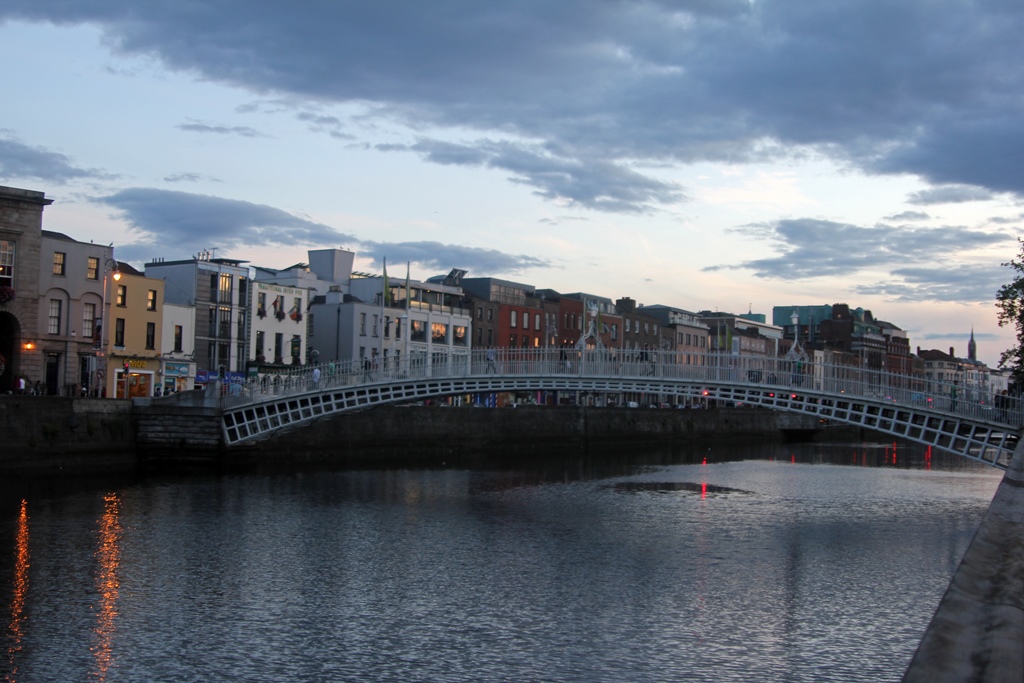
Ha'penny Bridge and River Liffey
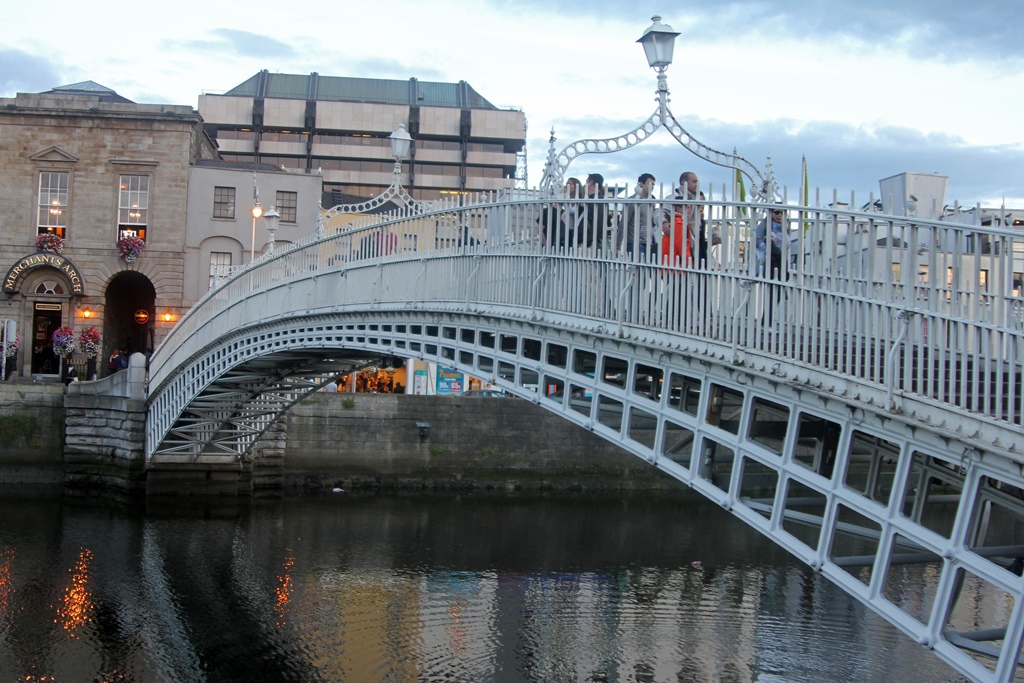
Ha'penny Bridge
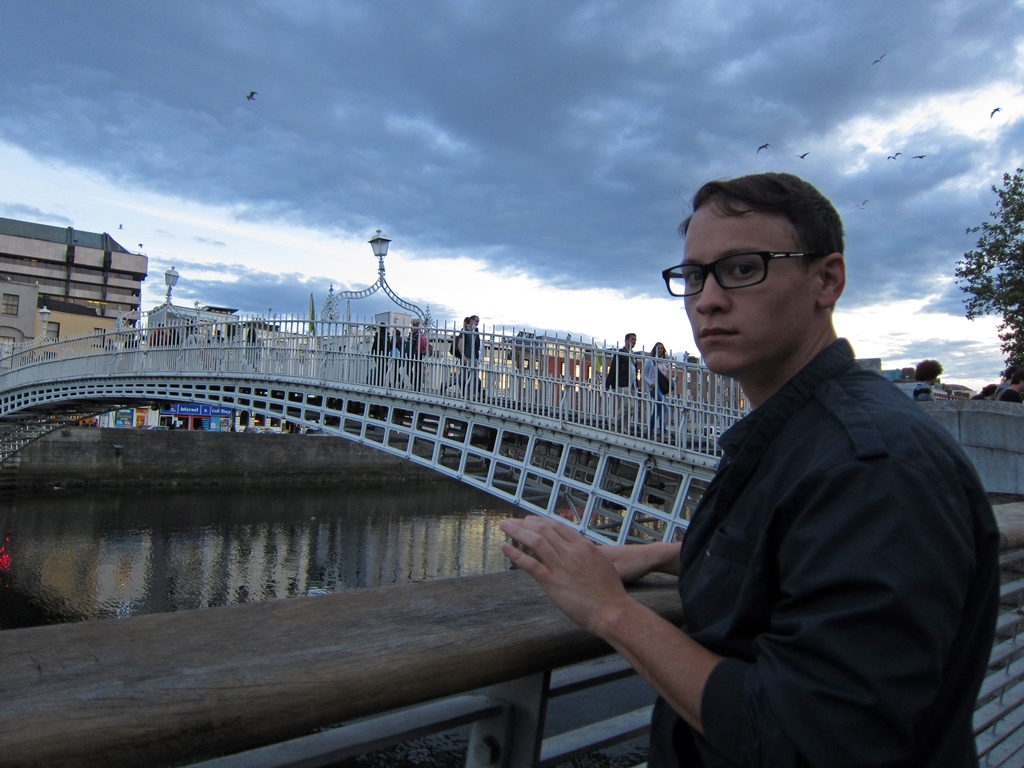
Philip and Ha'penny Bridge
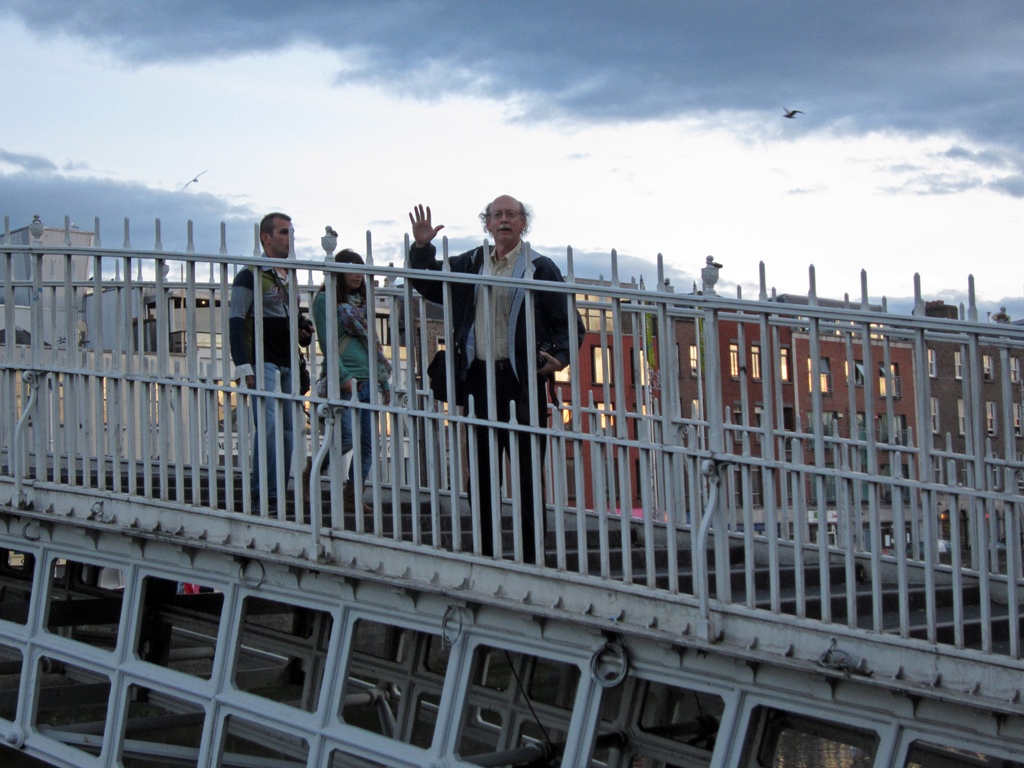
Bob on Ha'penny Bridge
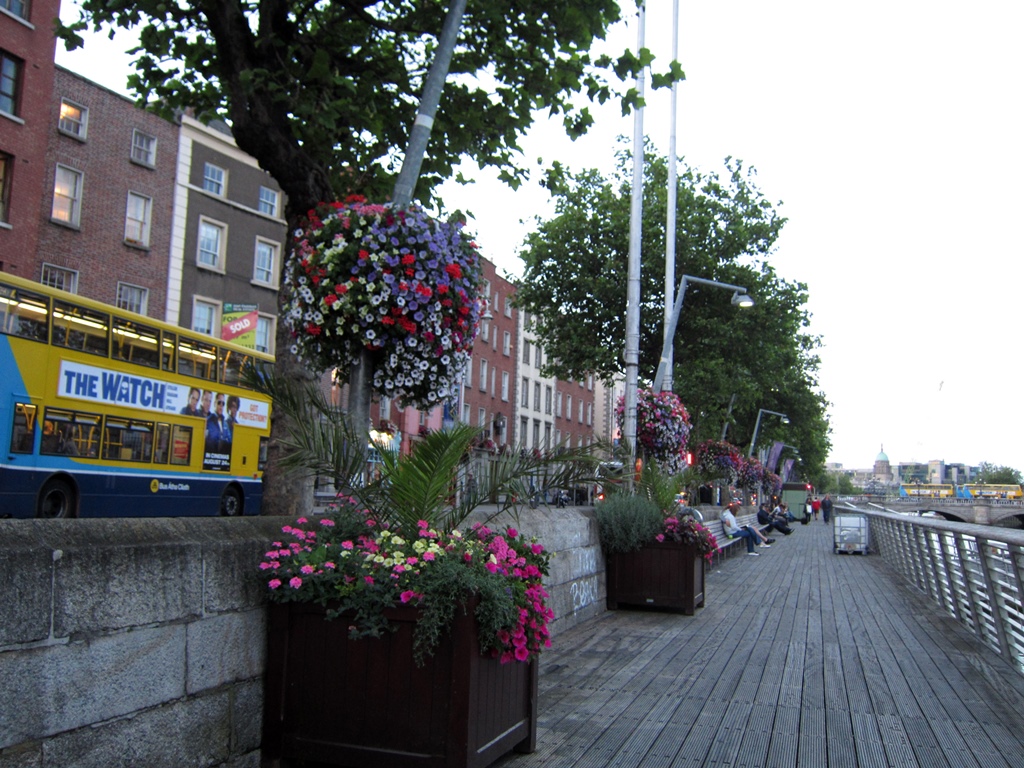
Bachelors Walk
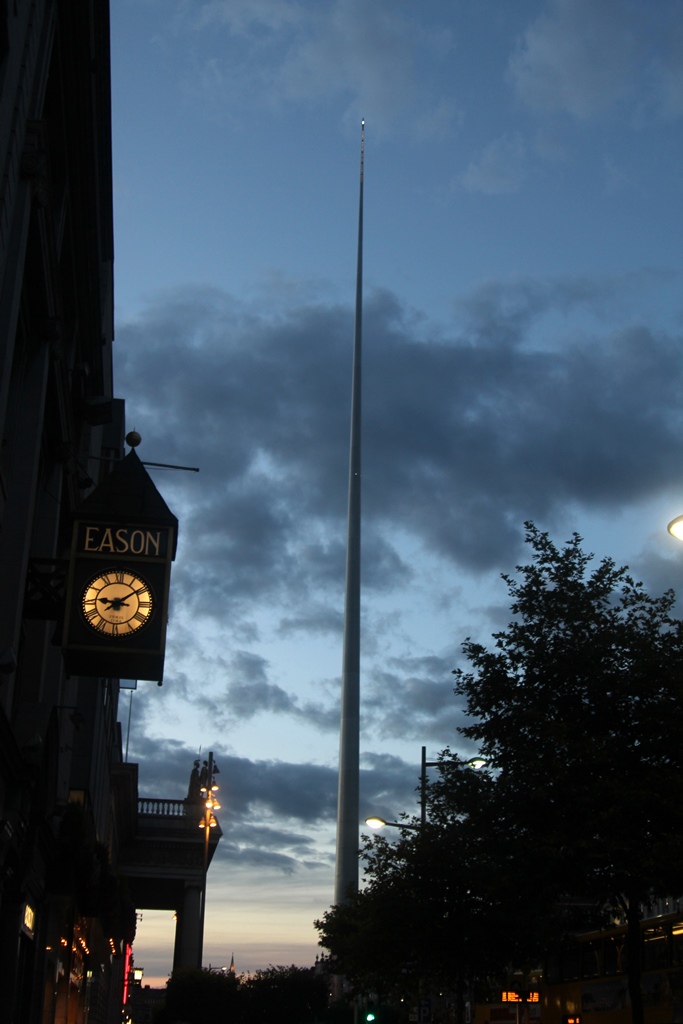
Spire of Dublin
On reaching O'Connell Street, we turned north and returned to the hotel. As usual,
we needed to rest up for something we'd planned for the next day. In this case it
was to be a tour we'd signed up for, to an estate south of Dublin called Powerscourt.









